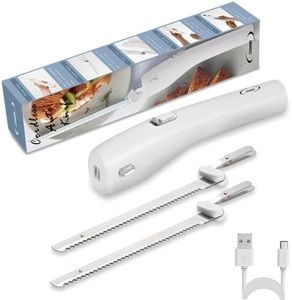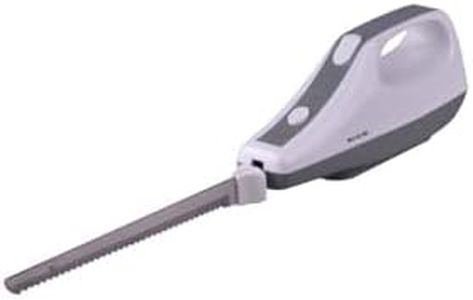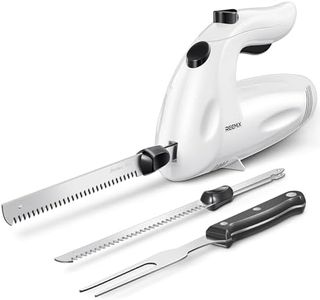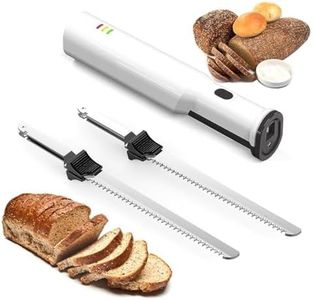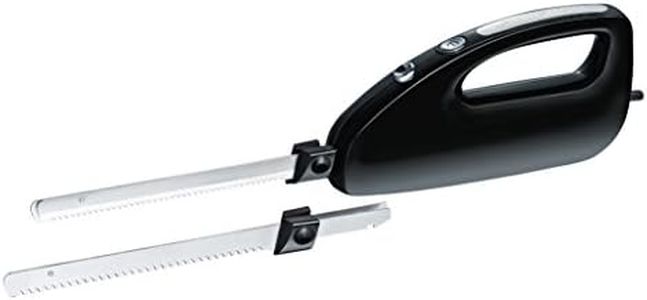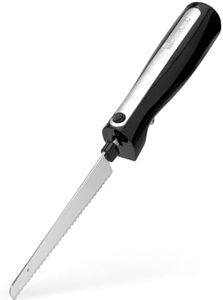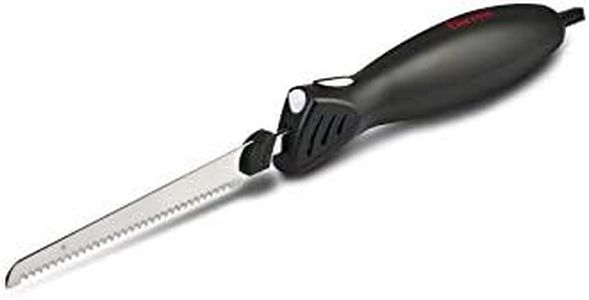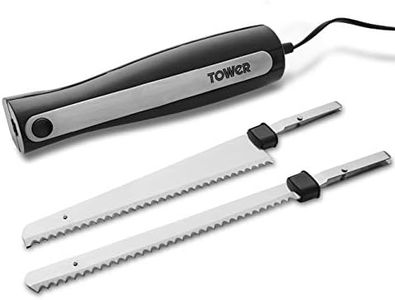We Use CookiesWe use cookies to enhance the security, performance,
functionality and for analytical and promotional activities. By continuing to browse this site you
are agreeing to our privacy policy
10 Best Electric Knife
From leading brands and best sellers available on the web.Buying Guide for the Best Electric Knife
Choosing the right electric knife can make food prep much easier, whether you're slicing bread, carving meat, or portioning fish. The key is to find a model that balances comfort, efficiency, and safety for your unique kitchen needs. To pick the best fit, consider how often you'll use the knife, what types of food you'll cut most, and your comfort with handling small appliances. Understanding the main features will help you make a confident choice.Blade TypeThe blades are the core of any electric knife, and their material and design impact what foods you can slice and how efficiently you can do it. Typically, you’ll find stainless steel blades that either come serrated for bread and roasts or straight for soft foods like fruits. If you mostly carve meats, a longer, fine-toothed blade helps with smooth slices. For bread or tougher crusts, a heavier serrated blade is best. Consider what foods you prepare most; select a blade style specialized for those purposes for better results.
Blade LengthBlade length affects what size foods you can comfortably slice. Shorter blades around 7 inches work well for small fruits or soft bread, while longer blades around 9-10 inches are better suited for large roasts or thick bread loaves. If you often carve large items, choose a longer blade; for mostly sandwich-making or small jobs, a shorter blade should suffice.
Motor PowerMotor power determines how easily the electric knife can go through dense foods without getting stuck or overheating. Measured in watts, higher power is better for heavy-duty jobs like slicing frozen meat, while moderate power is fine for bread or softer foods. Think about the toughest foods you'll routinely cut; if they’re dense or tough, opt for a model with higher motor power.
Handle ComfortA comfortable handle is essential for safe, controlled slicing, especially if you use the knife for prolonged periods. Look for ergonomic designs and non-slip grips. If you have smaller hands or limited grip strength, prioritize lightweight models with a well-shaped handle. If you’re left-handed, check for ambidextrous designs to ensure comfortable use.
Safety FeaturesSafety features like blade locks, safety buttons, and finger guards protect you from accidental injury. If you have children in your home or just prefer extra peace of mind, look for knives with built-in safety locks and power switches that require a deliberate press to operate. If safety is a top concern, prioritize these features.
Ease of CleaningBeing able to easily remove and clean the blades is important for both convenience and hygiene. Look for knives with detachable, dishwasher-safe blades. If you dislike hand-washing or want the easiest care routine, make sure the knife’s blades are easy to take off and can go in the dishwasher.
Corded vs. CordlessSome electric knives have cords, while others run on batteries. Corded knives provide steady power for long slicing sessions but may be less convenient depending on your kitchen layout. Cordless models offer more movement freedom, making them ideal for outdoor use or carving at the table, but require charging and may have shorter run times. Consider where and how long you’ll use the knife to decide which type fits you best.

